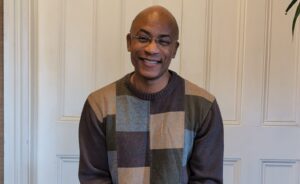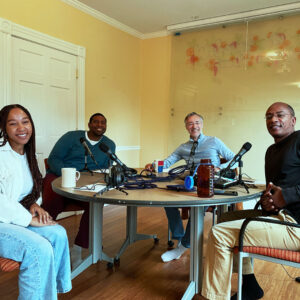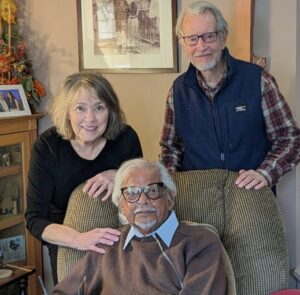During dire times, humans seem to have a natural inclination toward the arts as a mechanism to relieve the pressure of feelings otherwise incommutable.
Whether we’re referring to the practices of the ancients to perform dance and song for their gods in exchange for blessings, or the sorrow songs passionately sung by enslaved Black people to convey their shackled inner lives and yearnings for freedom, art has been the medium people have turned to time and time again to give substance to that which can’t be said.
However, the so-called ‘cultural elite’, those who live under the impression that legitimate art is only that which is hung in the galleries of lavish neighborhoods, where hundred dollar wines flow like water. The art of this privileged few tries its best to erase the lives of the majority, giving special apathy to those who live on the margins. This is art produced under the delusion of plush fantasy, built upon others’ backs.
Despite the efforts of the upper classes to discourage the production of art that speaks to radically different experiences, where various societal structures are unabashedly named as the forces that cause suffering and notions of taboo are simply done away with. These works of art, where various societal structures are unabashedly identified as forces that cause suffering, have been essential components to movements for social justice; from Harlem Renaissance artists boldly proclaiming that “We younger Negro artists who create now intend to express our individual dark-skinned selves without fear or shame.” , to writers living during the Civil Rights/Black Power era, such as Lorraine Hansberry, who actively chose to depict Black people’s lives without relying upon misinformed notions of Black humanity to give their works zest. Arts, in all of its manifestations, have pulled movements for change in directions that would have otherwise been inaccessible, because works of art constructed with an abundance of integrity and technical skill can activate people’s imaginations in ways that speeches and lectures can’t.
To not give those artists committed to liberatory struggle as well as the production of quality works of art credit is detriment to cultivating a world where people are able to creatively live as their entire selves. Artists dedicated to these missions are extremely reliable for capturing experiences that would otherwise decay into vague recollections and dust. To deny the contributions of these artists is to erase skillful encapsulations of human reaction to social phenomena.
This said, when eighteen year-old Michael Brown was slain in Ferguson, Missouri by Ferguson Police Department officer Darren Wilson on August 9th, the outcry of the artists was imbued with a wave of indignant pain only the most tragic social phenomena are capable of triggering. This tragedy, within the context of post-Zimmerman America and continued further violence directed toward Black youth,such as Renisha McBride, was met with a global outpouring of art.
Artists of all disciplines released wave after wave of material in the weeks following Brown’s killing and the community led protests against the FPD’s refusal to penalize Officer Wilson for his actions as well as general lack of respect for Brown and his family. A statement of solidarity, published on Red Wedge Magazine’s website,signed by artists across the country and abroad, serves as a microcosm of the energy artists have channeled into producing art which grapples with the reality that the state deems Black lives disposable.
Beginning with the writers, a poem entitled not an elegy for Michael Brown, by award winning poet Danez Smith, begins with the line, “I am sick of writing this poem”, and goes on to question the masses commitment to justice for Brown and other slain Black youth. In this same literary vein, various DC-area poets contributed to the development of Dear Ferguson – A DC Community Poem, searingly read by internationally renowned DC based spoken word artist Pages Matam. Both poems add compelling perspectives and fresh language to the discourse surrounding the events continuing to erupt in Ferguson.
In Philadelphia’s iconic LOVE park, two actors, Lee Edward Colston and Keith Wallace recreated Brown’s last moments right in front of the park’s eponymous ‘LOVE’ sculpture. By having Wallace wear a white T-shirt with holes resembling bloodied gunshot wounds torn into the back while lying face down and motionless for an hour, the two artists received mixed messages from spectators; from those in respectful awe of the artists’ creativity to those who degraded the pieces message to pure spectacle by having their portraits taken in front of Wallace’s still body.
Within the musical realm, a deluge of tracks have been released by artists in various genres and all levels of fame. Releasing an intensely emotional track alongside a very vulnerable statement on the nature of living as a Black man in America, rapper J. Cole’s track Be Free is a somber conveyance of a simple desire for a liberty most African-American’s will never experience in today’s world. Getting to the root of the Ferguson community’s, and by extension all Black people engaged in struggle against the state, frustration, Lauryn Hill unveiled the melancholy Black Rage. Tenderly singing lines such as, “Black rage is founded on two-thirds a person”, a reference to theDred Scott Case of 1857, Hill centers the history of Black people being dehumanized, abused, and exploited, revealing the historical context of the Ferguson community’s rage.
And, although met with some backlash by local police departments, visual artists, such as University of Missouri – St. Louis student Howard Barry, have not stood idly by as their counterparts have been feverishly creating. From photographs depicting uncensored police brutality against Ferguson protesters to an upcoming exhibition of the works of two-hundred and fifty St. Louis area artists, the visual arts have been essential in tugging at people’s consciences, using the universal language of imagery.
In the city of Ferguson itself, a Before I Die wall was constructed by a group of teachers in hopes that the community would use the artpiece to support their efforts in imagining a future without the realities that led to Michael Brown’s death. And, in their calls for acts of solidarity, the people of Ferguson requested those capable of organizing street theatre performances join them on the ground, hinting at an abundance of artwork created, and in production, by Ferguson community members themselves.
Painter Cbabi Bayoc told Art in America, “…a lot of art will come of this”, in reference to the aforementioned events of this summer, and we have all the reason to believe him.
by Malik Thompson
Originally published here at Grassroots DC.




